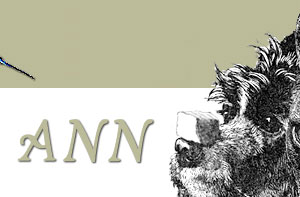|
Instinctive drift is the TENDENCY for a learned behavior (for trainers, that means a trained behavior) to trigger innate behaviors. The closer the similarity (topography) between the learned behavior and an innate behavior, the more likely the occurrence of the underlying innate behavior. The innate behavior, such as the dog's shaking its head to kill prey, may not come out full-blown at first, but gradually become stronger and stronger and more clearly defined with time and repetitions. With some animals and some behaviors, instinctive behavior can become strong enough to interfere with learned behavior. In training, especially when the trainer is inexperienced or unobservant, the animal may begin to emit the innate behavior, say, head shaking or chewing by a dog during a retrieve, and be reinforced (clicked and fed) for that little piece of unwanted behavior buried in the overall wanted retrieve behavior. The timing issue, always important, is especially critical when teasing out or trying to separate wanted from unwanted behaviors. When instinctive behavior is reinforced by the trainer, even inadvertently, it can become very strong very fast, and very difficult to extinguish later on. This is just one reason why early training can be important, and the criteria for early trained responses should be carefully thought out.
For those of you remembering the photo birds we trained, the birds VERY gently touched the camera to the window surface, which could be anything from a screen to glass. The natural tendency of the bird was to slam very hard the camera against the surface. This was just like the bird killing prey, or cracking open a nut. If the trainer reinforced ANY hard thrusts of the beak, we would end up with a bird banging the window, and once established, hard thrusts were extremely difficult to extinguish.
Can you see where the instinctive drift creeps in here? In the evolutionary history of the raven, soft pecking was likely not advantageous, where hard pecking resulted in more success. We were asking for the bird to go against what its nature told it to do. There was an innate tendency for the bird to emit hard pecks rather than soft pecks. As soon as we screwed up a few times, and reinforced what we should not have, the bird was back to doing what was natural - hard pecks. These were wild birds being asked to fly untethered into strange territories, so punishing hard thrusts was not an option.
Timing the clicker was incredibly precise, and all of us had headaches at the end of the day. Early training was helped in later stages of the program when I designed some automated equipment that assisted in the timely reinforcement of gentle pecks. I don't know if it helped the birds all that much, but it sure cut down on trainer stress.
The important issue here is that this is a TENDENCY, and not all animals will exhibit this in ALL behaviors ALL of the time. A trainer should be sensitive to what behaviors MIGHT cause problems, and what the problems might be, that is, what behaviors might crop up under given conditions. To me, this is part of the craft, or art, of training; the recognition of what might happen and how to head off trouble before it starts. A good trainer makes it look easy.
Reprinted with permission Copyright 2001
Bob Bailey |


